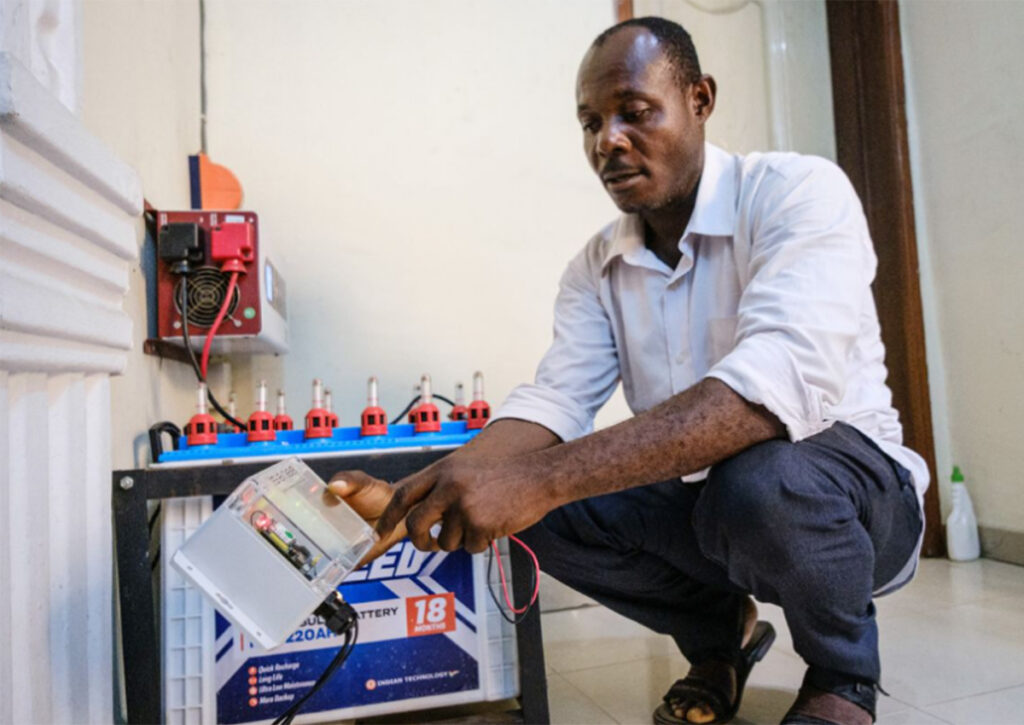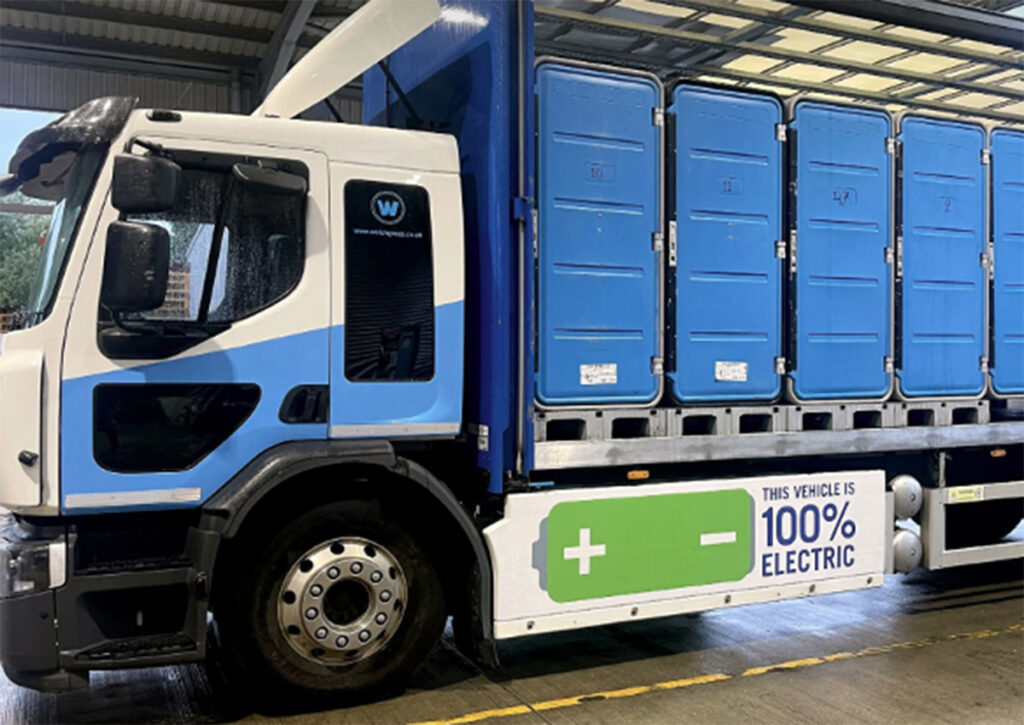Advancing off-grid energy access in Africa: How AI and digital technologies are redefining the frontier

Introduction
Across sub-Saharan Africa, approximately 600 million people still lack access to electricity, representing the world’s largest energy access challenge. In rural regions, the situation is especially acute: for instance, in Benin, only 18% of rural populations have access to power, compared to 70% in urban areas. For these communities, the lack of reliable energy is a structural constraint that limits agricultural production, healthcare and educational outcomes, and socioeconomic development.
Conventional grid extension has long struggled to reach these populations due to high infrastructure costs, low or scattered demand, and challenging terrain, amongst other barriers. However, artificial intelligence (AI) and advanced digital solutions are emerging not just as add-on tools but as core enablers of more agile, responsive and cost-effective systems. Distributed renewable energy (DRE) models, layered with intelligent software, are allowing service providers to deploy decentralised data-driven energy systems that can scale effectively.
Innovative ventures across Africa, including those supported by clean energy innovation accelerator Energy Catalyst, are embedding AI and advanced digital systems into next-generation energy infrastructure from the outset. From satellite-guided site selection and load forecasting powered by machine learning to AI-driven credit assessment and predictive maintenance, these technologies are addressing many of the persistent barriers that have historically slowed energy expansion across the continent.
The multifaceted challenge in Africa
While low rates of connection to generation assets are a visible symptom, Africa’s energy access gap stems from complex and interconnected structural issues.
Data and planning challenges: In many rural regions, energy developers lack accurate location-specific data about demand patterns, consumption behaviours, or even spatial distribution of settlements. This data scarcity turns system planning into guesswork, leading to suboptimal deployment of energy systems, particularly undersized or oversized installations that increase costs and failure rates.
Financial barriers: Rural customers often operate outside formal banking systems, making conventional financing models unviable. Energy developers struggle to attract investment due to perceived risks and limited revenue data, while customers cannot access affordable payment options.
Geographic and infrastructure challenges: Scattered populations across sparsely populated regions are expensive to serve with traditional infrastructure. Harsh environmental conditions undermine equipment reliability, while poor road access and weak communication networks make maintenance difficult and costly. Such factors comprise a tough operating environment for energy ventures seeking to achieve financial sustainability.
These intertwined constraints require intelligent solutions that can function effectively under resource limitations while adapting to local conditions – making AI and digital systems particularly well-suited.
AI and digital technologies: from static systems to responsive networks
Conventional energy infrastructure operates on fixed assumptions about generation and demand. A solar installation sized for average consumption might fail during peak agricultural seasons, while oversized systems waste capital. When remote systems experience failures, communities can wait weeks for repairs, which often has particularly severe repercussions for low-income African communities.
AI transforms this paradigm by enabling dynamic, responsive networks that optimise operations in real-time and predict problems before they occur. Unlike high-income countries using AI to optimise existing grids – such as Germany’s smart grid integration of renewable sources – African applications must also address foundational challenges such as site selection, customer financing, and basic infrastructure deployment. This creates both greater complexity and potentially greater transformative impact for AI interventions.
At the planning stage,machine learning models can map energy demand more accurately than traditional surveys. AI-driven geospatial analytics process satellite imagery to identify optimal sites using solar irradiance data, settlement sizes, population densities, infrastructure proximity, and socio-economic indicators such as market activity and mobile phone usage patterns. Developers can rapidly assess hundreds of potential sites and prioritise those with highest viability. This data-driven approach enables correct system sizing and realistic consumption estimates, reducing capital expenditure and significantly de-risking projects.
AI-powered remote monitoring transforms energy systems into self-optimising assets. Internet of Things (IoT) sensors continuously collect performance data while edge computing processes information locally, enabling real-time optimisation even with poor internet connectivity. Edge computing is crucial where cellular coverage is sporadic and data costs prohibitive. Systems can optimise battery cycles and balance loads without constant cloud connectivity, reducing bandwidth requirements and operational costs. This is especially useful for rural African regions which often have patchy access to the internet and slow connection speeds.
AI-driven predictive maintenance detects early indicators of hardware deterioration – declining battery capacity, inverter issues or loose connections – enabling intervention before complete failure. AI-based solutions have demonstrated the potential to decrease equipment downtime by up to 50% and extend machinery lifespan by 20% to 40%.
By analysing factors such as consumption patterns, weather forecasts and local economic activity, AI-powered models can fine-tune load forecasting across different time horizons – from hours to seasons ahead. Historic usage data is particularly valuable in rural Africa where consumption is strongly tied to peak agricultural seasons. Such analytics enable energy systems to dynamically balance generation, storage, and distribution, minimising waste and prolonging asset life. Smart demand management programmes, powered by AI algorithms, can automatically shift flexible loads to periods of high renewable generation or offer time-of-use pricing incentives to customers.
AI-driven credit scoring analyses mobile money transactions, airtime purchases, and communication patterns to assess repayment risk without traditional credit histories. This enables flexible consumer-friendly payment options, such as pay-as-you-go (PAYG) or micro-loans, which are often critical for engaging unbanked populations which are prevalent across Africa. Once customers are connected, machine learning identifies those whose repayments are at-risk and automatically adjusts their payment schedules. This responsive approach helps DRE providers operate in markets characterised by low-income customers with irregular cash flows.
Real-world deployment: AI innovations in action

A wide range of Energy Catalyst-supported projects, including those featured below, are integrating AI and advanced digital systems to address critical operational challenges.
OrxaGrid‘s Grid Analytics Platform (GAP) deploys IoT sensors and edge computing gateways to continuously monitor voltage fluctuations, current flows, temperature variations, and bidirectional power exchanges in real time in Ugandan local electricity networks. Its machine learning algorithms identify performance degradation patterns weeks before critical failures occur. Its AI application improves load forecasting by enabling developers to predict energy demand, optimise generation and distribution, and balance supply and demand. This intelligent approach to grid management significantly reduces operational costs for renewable energy producers while improving service reliability for end-users.
In Nigeria, enee.io’s low-cost energy monitoring system and diagnostics platform uses IoT sensors and edge computing to capture data from across the DRE system – including generation, storage, and consumption – creating a complete picture of real-time performance. Its AI-driven ‘State of Health’ system provides users with actionable insights into battery capacity and lifespan, detailed load profiling, and energy flow efficiency. Users can then make data-driven decisions about energy consumption and implement predictive maintenance schedules that minimise system downtime. These capabilities reduce operational costs while maximising system reliability and performance.
SWaDE deploys an AI-powered platform designed to support small-scale farmers in Ethiopia by optimising agricultural water use and energy efficiency. By modelling local irrigation demand and monitoring soil moisture through high-resolution satellite data, this system enables precision-based and predictive irrigation planning. This enables farmers to improve harvest timing, conserve water, and minimise the energy required for pumping and irrigation. This dual approach – combining water demand forecasting with energy-conscious agricultural practices – creates a synergy between resource management and productivity. By aligning when and how water is used with smarter energy consumption, this system strengthens on-farm decision-making, boosts resilience to climate variability, and lays a more sustainable foundation for smallholder agricultural systems.
Hubl Logistics’ CoolRun system uses IoT-monitored passively cooled pods to maintain cold chain temperatures for transportation of perishable goods across Malawi and beyond. Each pod functions as a comprehensive data collection unit, continuously recording location coordinates, temperature fluctuations, door access events, and detailed trip histories. It provides essential compliance documentation while enabling logistics managers to maintain cargo integrity across complex multi-leg journeys and numerous handoffs. The accumulated data serves as the foundation for AI-powered optimisation algorithms that enhance route planning efficiency, maximise asset utilisation rates, and predict spoilage risks across fragmented rural distribution networks. This intelligent approach to cold chain management reduces food waste while improving market access for rural producers.
Challenges and risks
While AI offers transformative potential for African energy access, implementers must navigate an array of operational challenges and risks.
Data quality and algorithmic bias: AI effectiveness depends on data quality and availability, often severely limited where energy expansion is most needed. If models are trained on sparse or highly location-specific datasets, they can then exclude communities with dissimilar consumer profiles when deployed in other regions. Credit scoring algorithms might disadvantage groups with limited digital footprints, while site selection models could favour areas with better data availability. Opacity in AI-driven decision-making has the potential to undermine accountability and trust in DRE ventures, amongst local authorities as well as consumers.
Privacy and data governance: AI systems collect sensitive data about household consumption patterns, economic activities, and social networks. Poor data protection and governance could disproportionately harm low-income consumers, particularly when unethically trained algorithms exclude people from energy access or financial services.
Technical capacity and dependency: Over-reliance on external AI systems could undermine local technical capacity-building. Without adequate skills development and technology transfer, AI-powered systems risk creating new dependencies rather than sustainable energy sectors. This could especially impact users in African countries where there is currently a shortage of skilled professionals in this field.
System resilience While AI improves reliability through predictive maintenance, the sophistication of such systems introduces potential vulnerabilities. Network failures, software bugs, or cyberattacks could compromise energy delivery, particularly in remote areas with limited backup systems and technical support.
Conclusion: Towards a digitally intelligent energy future in Africa
Africa’s unique position as a greenfield market presents unprecedented opportunities for AI-driven innovation. Unlike high-income countries integrating AI into existing systems, African providers can design responsive and adaptive data-rich energy systems that simultaneously reduce costs, improve reliability, and expand access. However, realising this potential entails coordinated action across multiple stakeholders.
African governments must develop regulatory frameworks that encourage AI innovation while protecting consumer data and curtailing algorithmic bias or overreliance on such technologies during planning. Measures include establishing data governance and privacy standards, supporting local technical capacity-building, and creating enabling environments for cross-sector collaboration. Whilst AI is not a silver bullet, government could integrate and operationalise these technologies as part of their rural electrification strategies.
Financiers should support integrated approaches that combine AI capabilities with community engagement and sustainable business models. Priority should go to solutions that build local expertise while delivering measurable improvements in energy access and reliability.
Energy providers should prioritise transparent and locally-relevant AI systems that adapt to diverse contexts while maintaining high performance standards. Success depends on building trust through community engagement that sets out demonstrable benefits. Whilst coordination amongst stakeholders is needed to mitigate the downsides, the positive impact of AI-powered implementation is potentially vast. Ecosystem players in Africa are already grasping the chance to leapfrog traditional infrastructure development and lead global innovation in energy provision. In this evolving technological landscape, expanding energy access will increasingly mean much more than building infrastructure. It will mean building intelligence into the infrastructure itself, creating responsive systems that learn, adapt, and improve over time to better serve the communities they power.